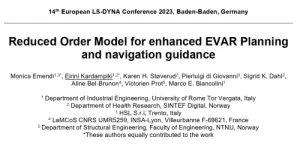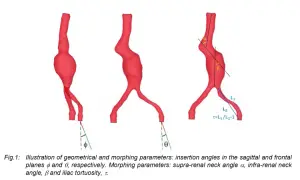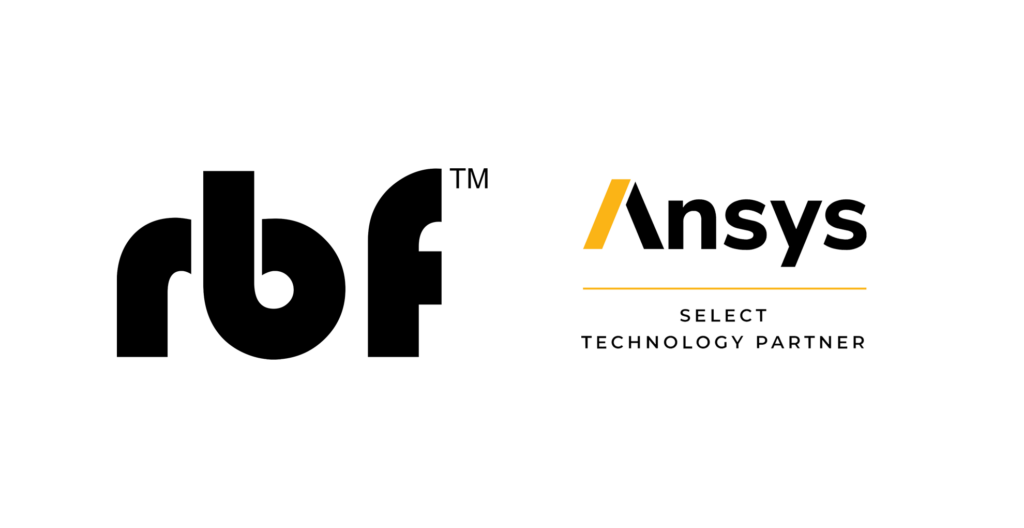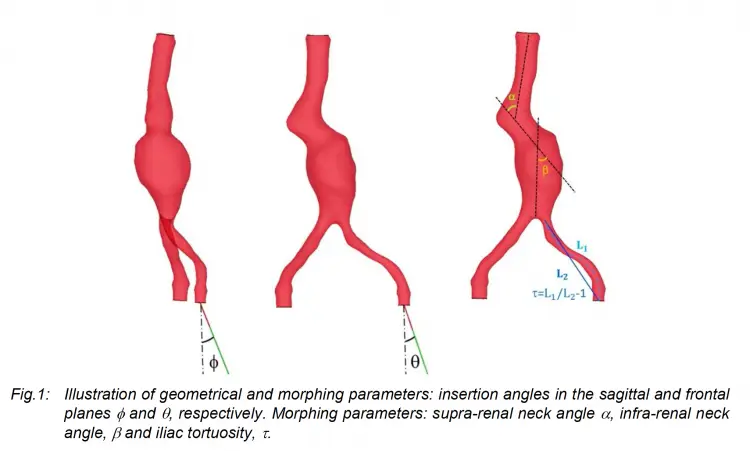Exciting news to share! The 2023 proceedings have been unveiled on https://www.dynalook.com/, showcasing an impressive archive of over a hundred research papers.
Our contribution to this repository is the paper titled “Reduced Order Model for Enhanced EVAR Planning and Navigation Guidance”

Endovascular Aneurysm Repair (EVAR) is a revolutionary minimally invasive technique for treating abdominal aortic aneurysms, involving the deployment of a stent graft through the iliac arteries. In our paper, we delve into the challenges associated with this procedure, particularly the straightening effect induced on the iliac arteries during the insertion of a stiff guidewire from the femoral artery to the aorta.

Endovascular aneurysm repair (EVAR) is a minimally invasive procedure for the treatment of abdominal aortic aneurysms that consists in stent graft deployment through the iliac arteries. During this procedure, a stiff guidewire is introduced from the femoral artery towards the aorta to support the proper deployment of the stent graft. The insertion of the stiff wire triggers a straightening effect on the iliac arteries, smoothing out their natural tortuosity. This morphological alteration is hard to be measured intraoperatively or be forecasted preoperatively. The main bottleneck is that the preoperative Computed Tomography (CT) does not get updated during the operation. Consequently, clinicians perform their maneuvers according to the initial aortic configuration and inject contrast in the vessel to visualize their configuration when it is needed. This practice could possibly lead to sub-optimal stent graft sizing, choice of the stent’s landing zone and to an increase in radiation exposure and contrast doses, especially in complex cases.
You can access the full paper.



